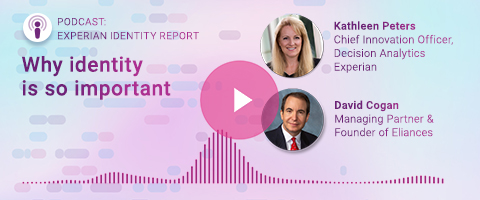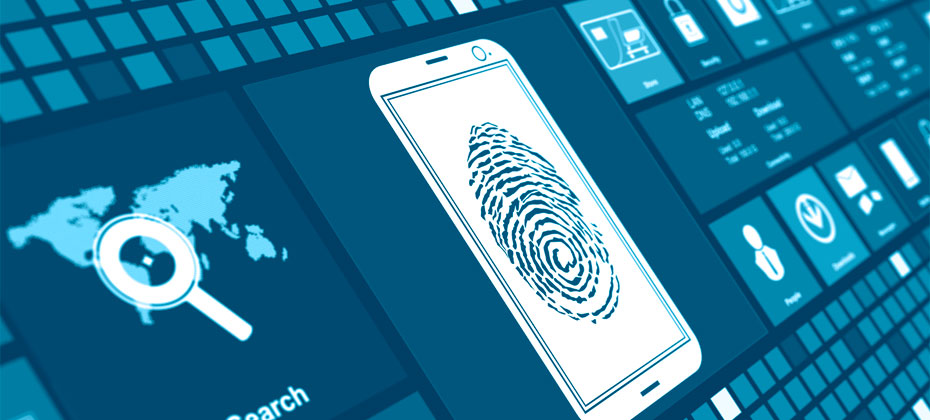Tag: identity resolution

This article was updated on February 5, 2024. Identity management can refer to how a company creates, verifies, stores, and uses its customers' digital identities. Traditionally, many large organizations relied on a highly segmented and siloed approach. For example, marketing, risk, and support departments might each have a limited view of a customer, and the tools and systems that support their specific purpose. Organizations are now shifting to a more holistic approach to enterprise identity management. By working together, departments help contribute to building a more complete, single view of a customer. Some companies have renewed or increased their focus on the transformation during the pandemic, and the transition to an enterprise-wide identity management strategy can have long-lasting benefits. But it isn't always easy. Challenges of an enterprise-wide identity management strategy Gathering the initial momentum needed to break out of a siloed approach can be particularly challenging for large organizations when each business unit has an ingrained identity system that meets the unit's needs. Smaller organizations might have an easier time gathering consensus, but budget or technological limitations may be serious constraints. Even after a decision is made and the budget gets set aside, organizations need to think through how they'll create and manage a new enterprise-wide identity management system. It's not a one-and-done upgrade. For the strategy to succeed, you'll need to have processes in place to onboard, verify, secure, and activate the new digital identities. READ: What is Effective Multifactor Identity Authentication? Why use an enterprise-wide approach? Motivations and specifics can vary depending on an organization's size and structure, but some companies find a more holistic approach to customer identity management helps them: Improve customer experiences Save money by removing redundancies Boost sales with better-targeted marketing Better understand customers' needs Provide faster and more relevant support Make more informed decisions Detect and prevent fraud These benefits can play out across the entire customer lifecycle, and identity management systems are able to achieve this by pulling in data from various sources to build robust consumer identities and systems. Your internal, first-party data will be the most valuable and insightful, but you can append multidimensional data from third-party sources, such as consumer credit databases, demographic data or device data. And second-party data from partner brands or organizations. READ: Experian 2023 Identity and Fraud Report Consider the regulatory and security challenges An enterprise identity data management approach can also mean re-evaluating the applicable regulations and security challenges. The passage of the E.U.'s General Data Protection Regulation and California Consumer Privacy Act marked an important shift in how companies need to handle consumers' personal information — but that was only the start. Some U.S. states have also passed or are currently considering data privacy laws. Industry-specific regulations can apply as well, particularly in the healthcare and financial services industries. It's not as if a siloed approach lets an organization avoid regulation, but keeping current and upcoming laws in mind can be important during a large digital transformation. Additionally, consider how going beyond the minimum requirements could be beneficial. In a 2023 Experian white paper, we found that 61 percent of consumers want complete control over how companies use their personal data.1 Security also needs to be top of mind for any organization that collects and stores consumers' personal information. An enterprise-wide identity management system may make managing increasing amounts of data easier, which could help decrease fraud risks. And your customers may be willing to help — 67 percent are open to sharing data if it will increase security and help prevent fraud.2 Keeping customers' desires front and center Experian partnered with Aite-Novarica to study enterprise-wide identity management. All but one of the 12 executives interviewed said client experience is a primary or predominant driver in the transformation of their identity management programs.3 Once implemented, a holistic view of customers can increase the experience in many ways: Meaningful engagement: You can deliver relevant and timely offers if you understand when, where and why consumers are interested in your products and services. Similarly, you'll know who isn't a good fit and won't bother them (or waste money) by showing them ads. Verification: Using a single, persistent identity could make the initial and ongoing identity verification an easier process that doesn't disrupt consumers' lives or lead to frustration. Ongoing recognition: Nearly 70 percent of all consumers want businesses to recognize them across multiple visits.3 But you'll need to study your customers to determine how much friction is acceptable. Some people prefer security over convenience and are willing to trade a little time to use extra verification methods. Customer service: Having more insight into a customer's entire history and interactions with your organization can help you quickly respond when an issue arises, or even anticipate and solve potential problems. Security: Nearly two-thirds (64 percent) of consumers say they're very or somewhat concerned with online security.4 Companies that can quickly and accurately identify consumers can also help keep them safe from fraud and identity theft. While these may be some consumers' top concerns today, continue listening to your customers to better understand their wants and needs. WATCH: Webinar: Identity Evolved — Building consumer trust and engagement Implementing an enterprise-wide identity management strategy Identity management can become a daunting task, particularly as new data sources begin to flow. As a result, many organizations turn to outside partners who can help manage part, or all, of the process. For example, an identity management solution may offer identity resolution and help create and host an identity graph (the database that stores the unique digital identities). A more robust offering may also help with other parts of identity management, including ongoing data hygiene and helping you turn your unique customer insights into actionable marketing campaigns. Experience managing vast amounts of data is also important, as is access to additional offline and online data sources. In 2023, Experian found that 85 percent of companies said poor quality customer contact data negatively impacted their operation's processes and efficiency.5 An enterprise-wide system that allows business units to update a single customer profile with the latest contact information might help. But working with a data provider that appends the latest info from outside databases could be a better way to ensure you have customers' latest contact info. When researching potential partners, also consider how their offerings and approach align with your goals. If, like others, improving the customer experience is a priority, make sure the solution provider also has a customer-first approach. In turn, this means security is a top priority — it's what customers want and it's important for protecting you and your reputation. Learn more about Experian's identity management solutions and how you can benefit from working with a company that understands identities are personal. Learn more 1Experian (2023). White paper: Making identities personal 2Ibid. 3Aite-Novarica and Experian (2022). Enterprise Identity Management: Evolving Aspirations and Improved Collaboration Are Transforming the Discipline 4Experian (2023). Identity and Fraud Report 5Experian (2023). White paper: Making identities personal

This article was updated on January 26, 2024. Marketers are facing new challenges as third-party cookies crumble, and people use more devices throughout the day. Someone might comparison shop on their laptop in the morning, do more research on a tablet in the afternoon and finally decide to make a purchase on their phone before falling asleep at night. Being able to track these movements and insert yourself where appropriate can be difficult, but it's not impossible. One solution that's becoming increasingly attractive is creating a unified identity for each customer — and matching every piece of data and touchpoint to the single profile. For this to work, you need identity resolution. What is identity resolution? Identity resolution is the ongoing process of linking various identifying elements to create and expand a unique identity. The multi-step process can include: Securely onboarding data into a system Hashing or tokenizing personal information to improve security and privacy Setting aside information that can't be matched to an identity yet Matching or linking identifiers to a known unique identity Verifying that the identities and identifiers are accurate An identity graph (ID graph) is an essential part of identity resolution. It's the proprietary database that can pull in and store data from different sources and link them to a unique identifier — also known as a persistent identification number. Depending on the system and purpose, identity resolution may focus on creating a single identity for a person, household, or business. The information can come from internal sources, including a customer relationship management (CRM) tool, email marketing platforms, event management platforms, social media accounts, point-of-sales systems, and other digital and offline touchpoints. Additionally, third-party data sources, such as credit or demographic data, can contribute to building a more complete identity. And second-party data — information that's shared between brands or companies — can also be helpful. As new digital and offline information is created or found, it's linked to the existing persistent identification number in the ID graph. The process can happen in different ways. The resolution system could accurately match an engagement to a person with deterministic data, such as a hashed email address, assuming they logged in. If the person didn't log in, a probabilistic model may be able to accurately attribute the session to the person's identity based on indicators that it's likely the same person, such as a device ID or behavioral data. A hybrid approach combines deterministic and probabilistic approaches, which could be important for scaling. The goal and end result is often called a holistic, single-unified, or 360-degree view of a customer. READ MORE: Making identities personal Why does identity resolution matter? Identity resolution lets you know with whom you're connecting, which can be important throughout a customer's lifecycle. From marketing to collections, you want to be able to engage the right person on the right channel with the right offer. And that's only possible when you can accurately identify people. Consistent and accurate identity resolution is difficult, though. Experian's 2023 Identity and Fraud Report found that 92% of businesses have a strategy in place for identifying consumers online. But 63% of consumers are either "somewhat confident" or "not very confident" that businesses can accurately recognize them online. What are the benefits of identity resolution? It's a worthy goal to push toward, because you can use identity resolution solutions to: Consolidate your view of customers Companies may have multiple profiles of the same customer — one from an email list, another from their loyalty program and a third from an outdated system. Your customers are also interacting with you in different ways, perhaps logging into an account from their laptop in the morning while visiting your site from a phone at night. Identity resolution lets you connect all these elements to create a single profile. Build targeted and measurable marketing campaigns Once you have a single and consistent view of your customers, you can more accurately segment and target your marketing campaigns. Personalizing messages can increase engagement and effectiveness. And, equally important, knowing to who you don't want to send messages can help you avoid wasting marketing spending. Some identity resolution services can also help you track anonymous visitors and customize your marketing with look-alike models, which can identify people who are likely part of your target audience. You'll also be able to more accurately measure the effectiveness of a campaign. With a single customer view, it's easier to know if and how a targeted social media ad, television spot and emailed coupon worked together to create a sale. Increase customer experiences across brands When implemented throughout an organization, you can also use the single view of a customer to create a consistent experience across brands and business units. Each can benefit from a more holistic understanding of the customer and can contribute to building out customers' profiles. Seamlessly confirm identities Identity resolution can also create a more frictionless experience for customers who want to create or log into your site, and it can help with detecting fraud and high-risk consumers. But keep data security top of mind. Consumers rank privacy (79%) and security (78%) much higher than login convenience (38%) when considering their online experience. What does an identity resolution solution look like? The need for and type of identity resolution can vary depending on a business' challenges and goals. For instance, large retailers often have a lot of first-party data — so much that it may be overwhelming. For them, an identity resolution solution that can organize internal data while enhancing it with external data points could be a priority. In contrast, a business with infrequent touchpoints might not have as much first-party data and could benefit from a solution that offers as much external information as possible. Some organizations are building their own internal identity resolution services to address these challenges, but many are looking to outside partners for identity resolution. When comparing partners, consider: Flexibility and scalability: Understand which data the solution can onboard and how quickly it can onboard data. Consider whether you'll want to be able to use real-time APIs or batch processing, and the limitations on how much data the provider can process at a time. Additionally, consider whether the ID graph will use persistent IDs that can change as you scale. Matching and analysis: Ask about the solution's approach and success with matching online and offline data and the options to integrate or append second and third-party data. If you want to be able to securely and privately share anonymized identities internally or with partners, make sure that's an option as well. Integration: Research whether the provider can easily integrate your existing services and vendors. Privacy: 73% of consumers say it's a business's responsibility to protect them online. Ask about the provider's experience and approach to storing and anonymizing data. Some solutions also have built-in activation tools. These let you build and launch omni-channel campaigns. They also analyze and report on how well your campaigns are performing. Get started today To learn more about the importance of digital identity and Experian's identity solutions, visit us today. Learn more

Fraud is a serious concern for everyone, including businesses and individuals. In fact, according to our 2023 U.S. Identity and Fraud Report, nearly two-thirds (64%) of consumers are very or somewhat concerned with online security, and over 50% of businesses have a high level of concern about fraud risk. The fraud landscape is constantly evolving, and staying vigilant against the latest trends is critical to safeguarding your organization and consumers. As we reflect on 2023, let’s look at the top fraud trends and their continued potential impact on your business. The evolution of new fraud trends When economic uncertainty reigns, a rise in fraud often follows. To begin with, consumers tend to be financially stressed in such periods and prone to making risky decisions. In addition, fraudsters are keenly aware of the opportunities inherent in unstable times and develop tactics to take advantage of them. For example, as consumers rein in spending and financial institutions struggle to maintain new account volumes, fraudsters might ramp up their new account and loan activities. Fraud is becoming more sophisticated. For instance, thanks to the rapid rise in the availability of artificial intelligence (AI) tools, fraudsters are increasingly able to impersonate companies and individuals with ease, as well as consolidate data from diverse sources and use it more efficiently. The most impactful fraud trends of 2023 The fraud trends that emerged in 2023 were diverse, though they all had one thing in common: fraudsters' keen ability to take advantage of new technologies and opportunities. And businesses are feeling the repercussions, with nearly 70% reporting that fraud losses have increased in recent years. Here are five trends we forecasted in the fraud and identity space that challenged fraud fighters on the front lines this year. Deposit and checking account fraud With everyone focused on fraud in the on-line channels, it is interesting that financial institutions reported more fraud occurring at brick-and-mortar locations. Preying on the good nature of helpful branch employees, criminals are taking risks by showing up in person to open accounts, pass bad deposits and try to work their way into other financial products. The Treasury Department reports complaints doubling YoY, after increasing more than 150% between 2020 and 2021. Synthetic identity fraud Not quite fake, not quite real, so-called synthetic or "Frankenstein" identities mash up real data with false information to create unique customer profiles that can outsmart retailers' or financial institutions' fraud control systems. With synthetic identity (SID) fraud real data is often stolen or purchased on the dark web and combined with other information — even Artificial Intelligence (AI)-created faces — so that fraudsters can build up a synthetic identity's credit score before taking advantage of them to borrow and spend money that will never be paid back. One major risk? As fraud rates rise due to the use of tactics like synthetic identities, it could become more challenging and expensive to access credit. Fake job postings and mule schemes Well-paying remote work was in high demand this year, creating opportunities for fraudsters to create fake jobs to harvest data such as Social Security numbers from unsuspecting applicants. Experian also predicts a continued rise in "mule" jobs, in which workers unknowingly sign on to do illegal work, such as re-shipping stolen goods. According to the Better Business Bureau, an estimated 14 million people get caught in a fake employment scam yearly. Job seekers can protect themselves by being skeptical of jobs that ask them to do work that appears suspicious, requires money, financial details, or personal information upfront. Peer-to-peer payment fraud Peer-to-peer payment tools are increasingly popular with consumers and fraudsters, who appreciate that they're both instant and irreversible. Experian expects to continue to see an increase in fraudulent activity on these payment systems, as fraudsters use social engineering techniques to deceive consumers into paying for nonexistent merchandise or even sharing access credentials. Stay safe while using peer-to-peer payment tools by avoiding common scams like requests to return accidental payments, opting for payment protection whenever possible and choosing other transaction methods like paying with a credit card. Social media shopping fraud Social media platforms are eager to make in-app shopping fun and friction-free for consumers — and many brands and shoppers are keen to get on board. In fact, approximately 58% of users in the U.S. have purchased a product after seeing it on social media. Unfortunately, these tools neglect effective identity resolution and fraud prevention, leaving sellers vulnerable to fraudulent purchases. And while buyers have some recourse when a purchase turns out to be a scam, it's wise to be cautious while shopping on social media platforms by researching sellers, only using credit cards and being cognizant of common scams, like when vendors on Facebook Marketplace ask for payment upfront. Employer text fraud Fraudulent text messages — also known as “smishing,” a mash-up of Short Messaging Service (SMS) and phishing — continues to rise. In fact, according to data security company Lookout, 2022 was the biggest year ever for such mobile phishing attacks, with more than 30 percent of personal and enterprise mobile phone users exposed every quarter. One modern example of these types of schemes? Expect to continue to see a rise in gift card fraud targeting companies. For example, an employee might receive a text from their "boss" asking them to purchase gift cards and relay the numbers. The fraudsters get to shop, and the company is left with the bill. Why fraud prevention and detection solutions matter Nearly two-thirds of consumers say they are "very" or "somewhat concerned" with online security, and more than 85 percent expect businesses to respond to their identity and fraud concerns. Addressing and preventing fraud — and communicating these fraud-prevention actions to customers — is an essential strategy for businesses that want to maintain customer trust, thereby decreasing churn and maximizing conversions on new leads. There's a financial imperative to address fraud as well. Businesses stand to lose a great deal of money without adequate fraud prevention strategies. Account takeover fraud, for example, is an increasing threat to financial institutions, which saw a 90 percent increase in account takeover losses from 2020 to 2021. By making account takeover fraud prevention a priority, financial institutions can alleviate risks and prevent major losses. How to build an effective fraud strategy in 2024 In 2024, fraud management solutions must be even more technically advanced than the fraudulent techniques they're combating. But more than that, they need to be appealing to consumers, who are likely to abandon signup or purchase attempts when they become too onerous. In fact, 37% of consumers have moved their business elsewhere due to a negative account opening experience. Worryingly for businesses, this number was even higher among high-income households and those aged 25 to 39. To succeed, effective fraud strategies must be seamless, low friction, data-driven and customer-focused. That means making use of up-to-date technologies that boost security while prioritizing a positive customer experience. Concerned about fraud? Let Experian help As we look back at the top fraud trends of 2023, it's clear that scammers are becoming increasingly sophisticated in their methods. Fraud can create huge risks for your business — but there are ways to act. Experian's suite of fraud prevention and identity verification tools can help you detect and combat fraud. Find out more about Experian's fraud risk management strategies and how they can help keep you and your customers safe. Learn more

Experian’s eighth annual identity and fraud report found that consumers continue to express concerns with online security, and while businesses are concerned with fraud, only half fully understand its impact – a problem we previously explored in last year’s global fraud report. In our latest report, we explore today’s evolving fraud landscape and influence on identity, the consumer experience, and business strategies. We surveyed more than 2,000 U.S. consumers and 200 U.S. businesses about their concerns, priorities, and investments for our 2023 Identity and Fraud Report. This year’s report dives into: Consumer concerns around identity theft, credit card fraud, online privacy, and scams such as phishing.Business allocation to fraud management solutions across industries.Consumer expectations for both security and their experience.The benefits of a layered solution that leverages identity resolution, identity management, multifactor authentication solutions, and more. To identify and treat each fraud type appropriately, you need a layered approach that keeps up with ever-changing fraud and applies the right friction at the right time using identity verification solutions, real-time fraud risk alerts, and enterprise orchestration. This method can reduce fraud risks and help provide a more streamlined, unified experience for your consumers. To learn more about our findings and how to implement an effective solution, download Experian’s 2023 Identity and Fraud Report. Download the report

On average, the typical global consumer owns three or more connected devices.1 80% of consumers bounce between devices, while 31% who turned to digital channels for their last purchase used multiple devices along the way.2 Considering these trends, many lenders are leveraging multiple channels in addition to direct mail, including email and mobile applications, to maximize their credit marketing efforts. The challenge, however, is effectively engaging consumers without becoming overbearing or inconsistent. In this article, we explore what identity resolution for credit marketing is and how the right identity tools can enable financial institutions to create more cohesive and personalized customer interactions. What is identity resolution? Identity resolution connects unique identifiers across touchpoints to build a unified identity for an individual, household, or business. This requires an identity graph, a proprietary database that collects, stitches, and stores identifiers from digital and offline sources. As a result, organizations can create a persistent, high-definition customer view, allowing for more consistent and meaningful brand experiences. What are the types of identity resolution? There are two common approaches to identity resolution: probabilistic ID matching and deterministic ID matching. Probabilistic ID matching uses multiple algorithms and data sets to match identity profiles that are most likely the same customer. Data points used in probabilistic models include IP addresses and device types. Deterministic ID matching uses first-party data that customers have produced, enabling you to merge new data with customer records and identify matches among existing identifiers. Examples of this type of data include phone numbers and email addresses. What role does identity resolution play in credit marketing? Maintaining a comprehensive customer view is crucial to credit marketing — the insights gained allow lenders to determine who they should engage and the type of offer or messaging that would resonate most. But there are many factors that can prevent financial institutions from doing this effectively: poor data quality, consumers bouncing between multiple devices, and so on. Seven out of 10 consumers find it important that companies they interact with online identify them across visits. Identity resolution for credit marketing solves these issues by matching and linking customer data from disparate sources back to a single profile. This enables lenders to: Create highly targeted campaigns. If your data is incomplete or inaccurate, you may waste your marketing spend by engaging the wrong audience or sending out irrelevant credit offers. An identity resolution solution that leverages expansive, regularly updated data gives you access to high-definition views of individuals, resulting in more personalization and greater campaign engagement. Deliver seamless, omnichannel experiences. To further improve your credit marketing efforts, you’ll need to keep up with consumers not only as their needs or preferences change, but also as they move across channels and devices. Instead of creating multiple identity profiles for the same person, identity resolution can recognize an individual across touchpoints, allowing you to create consistent offers and cohesive experiences. Picking the right marketing identity resolution solution While the type of identity resolution for marketing solution can vary depending on your business’s goals and challenges, Experian can help you get started. To learn more, visit us today. 1 Global number of devices and connections per capita 2018-2023, Statista. 2 Cross Device Marketing - Statistics and Trends, Go-Globe.

Kathleen Peters, Chief Innovation Officer, Decision Analytics for Experian, was recently featured on the Eliances Heroes podcast as part of the new weekly segment, the “Experian Identity Report.” In the introductory show, podcast host David Cogan, spoke with Kathleen about why identity is so important to our society. Listen to the podcast for the full discussion and see the transcript below. Learn more about Experian Identity David Cogan: How critical is it? Well, I’ll tell you. Payment fraud will exceed $206 billion in the next five years and let’s face it. Managing one’s personal identity is very complicated on its own and if the business enterprise managing customer identities in a strategic and secure way and scale across countless interaction is extremely complicated. And it’s only going to get more complex with the future from what I understand and all the technology that’s coming out if not by the day, by the hour. And that’s why we’re bringing this to you. Interviews with the world’s leading experts on the game changing impact of identity and the need to use reliable data to make confident decisions that securely accelerate customer engagement and that’s why we’re honored here today to have with us Kathleen Peters, Chief Innovation Officer, Experian Decision Analytics North America. Kathleen Peters: Thanks so much David, it’s great to be here with you. DC: $206 billion of payment fraud in the next five years? I mean who’s going to want to turn on their computer after this. That is a serious number. What do we do? KP: It’s really important that we get our arms around this both as consumers as well as businesses because we want to engage online. So much of what we’re doing is digital. It especially started in COVID when we were having our groceries delivered and everything else and even our grandparents are having to do their banking transactions online. The world is changing, and fraudsters take notice of that as well. Fraudsters are opportunistic and when they see a bunch of folks doing stuff online that they’ve never done before, they’re seeing that as an opportunity too. DC: You know the days of people horseback riding and overtaking trains are long gone and now it’s all digital. KP: It’s a lot easier these days. DC: Why is identity so important to our daily digital lives and in business? KP: It’s a great question, David. And as a consumer myself, you, and I when we transact online whether that’s to have food delivered, or I’m buying something for my kids or I’m even paying a bill, I want to be able to trust that my information will be safe, that my privacy will be protected and that my experience will be as smooth as possible. I think that’s what we all want. So as consumers and as businesses, how do we enable all the opportunities this new digital world is presenting to us in a way that we are safe and also businesses can transact with us securely and have confidence on who’s engaging with them online. DC: Let’s talk about identity. What really makes identity so challenging to manage at a business enterprise level especially with how complex the business portion is? KP: Absolutely. It really comes down to there are so many elements that comprise our identity. It’s multidimensional. So historically, when we think about identity, we probably think about the things that were on our DL or passport the kind of information that’s pretty static – name, address, SSN, date of birth – those kinds of things. Once we get online, that identity becomes a little more challenging. We’re not necessarily physically in front of the business that we’re engaging with so the business needs to determine if the person is who we say we are. There’s a famous Far Side comic from years ago where a dog is sitting in front of the computer and he says “On the internet, no one knows you’re a dog.” And that still rings true in that you need to be able to ensure that the customer that’s coming to your business online is a real person and not a bot, is a person with good intent and not a fraudster. You need to look no farther than some of the recent controversies around Twitter and Elon Musk’s on-again, off-again, on-again intent to buy the company. A few months ago he had pulled back because he wanted to know definitively how many users on Twitter are humans versus bots and sometimes determining that can be really hard. And that comes down to managing all these new definitions of identity. DC: That’s very important. The thing is businesses and consumers want to know really what to be able to do. So, what kinds of things is Experian able to offer to help with all of that? KP: We’re in a great position as Experian because we have such a depth and breadth of identity data. We have the analytics horsepower and really touchpoints that are really unique when it comes to thinking about identity. So we’ve been talking about these traditional identity elements and digital, online identity. When you think about it, Experian also really understands your financial identity. So when you bring those things together and a consumer is looking to maybe understand what their financial identity means, their credit score or even how to improve their credit score, Experian’s there. We’ve got a robust direct to consumer business, we’ve got offerings like Boost and Go that help people establish and build their credit. We’ve got marketplaces for cards, insurance, etc. And then when consumers want to open a new account at a financial institution, or a fintech, or a retailer, or even maybe buy some crypto or log into a business, Experian can bring that wealth of capability to help our clients, help businesses, separate those good consumers with good intent from the fraudsters and do that very quickly and efficiently so that consumers can have a great experience and build that trust with who they’re engaging with. DC: Kathleen, that’s really amazing. Alright, now with all of that going on, what is Experian doing now with innovating for the identity space? KP: This is a real passion of mine David and this is where I spend a lot of my time. We’re always looking ahead to see what is the new data, new capabilities that can help us improve that consumer experience and engagement, help clients find the right consumers online to engage and target, and really allow our clients to grow their businesses safely. So, we’re building some products in house, where we’re connecting new pieces that might be new to Experian like linking some of that traditional identity data with particular payment instruments. Is this Kathleen’s credit card? Is this my bank account? When I come and try to do transactions online. But we’re also partnering with new companies. There are a number of startups that are being formed that have been in business looking at new ways to stop fraud and new ways to help identify and authenticate users online. So, as we innovate, we’re building some things in house, we’re partnering, we’re investing in young companies, and sometimes we’re even acquiring. So, bringing together that breadth of data, analytics, really trying to think about what will be the next way that we’ll think about identifying ourselves online is some of the ways we’re innovating. DC: Well, we’re very fortunate to have you and your company here to be able to do that because it’s growing by leaps and bounds. I’m amazed by the number $206 billion which is probably going to go higher, so we’re very fortunate that Experian is around and really identifying this issue and trying to do something now. What do you think our audience will learn about these weekly, critical chats about identity with Experian experts? KP: These are going to be great conversations that we’re going to be able to share and talk about how rapidly things are changing and evolving and how this really relates to our daily lives and the things that are going on in this very dynamic economic climate, digital climate, the way things are changing the way we’re engaging. I think people are also going to learn a lot about Experian’s mission around financial inclusion and opportunity creation. We’re a very mission driven company and we’re the consumer’s bureau, so we want to do this journey in partnership with consumers so that you can take an active part in protecting yourself, understanding what’s going on, helping us fight fraud, but also just really be able to take advantage of all of these new opportunities in a safe way.

From desktops and laptops to smartphones and tablets, consumers leverage multiple devices when engaging with businesses. For financial institutions, it’s important to identify and track consumers across devices to deliver personalized offers and increase opportunities for conversion. The problem with cookies Marketers have traditionally used cookies to determine what their audience’s interests are based on their browsing activity and past purchases. An example of this is when a user browses a product on a website and then leaves without buying. Later that day, they see an ad on social media featuring the same product they viewed earlier. While this may seem like an effective way for financial institutions to target or prescreen consumers, cookies are very limited — they can’t capture or connect a user’s behavior across multiple touchpoints. In other words, if a consumer were to browse a website on their mobile phone and then switch to their laptop, the business would view these sessions as two different visits from two different people, resulting in inconsistent messaging and a disjointed user experience. This is a huge problem because devices don’t decide to convert — people do. To reach the right consumers with the right message wherever they may be, financial institutions must look beyond cookies. This is where people-based marketing comes in. What is people-based marketing? People-based marketing takes a more personal marketing approach. Rather than targeting devices, people-based marketing connects businesses with real people, helping them understand who their customers are, what they’re looking for and how to engage them in more meaningful ways. It does this by gathering customer data from both online and offline sources to create a single customer profile. Let’s look at an example of people-based marketing by revisiting the scenario above. A user is browsing a company’s website on their mobile phone and decides to switch to their laptop. By capturing a single view of the user with a people-based marketing solution, the brand can recognize them and resume their experience on the new device. What’s more, the brand understands the user’s intent at that stage of their customer journey and leverages real-time data to make relevant offers and recommendations, helping further personalize their experience. Benefits of a people-based marketing approach To create better-targeted credit marketing campaigns, financial institutions must ensure they have the right data and technologies in place. Experian’s industry-leading database technology provides the freshest, most comprehensive consumer credit data to help organizations optimize their lending criteria and marketing campaigns. With Experian’s people-based marketing solutions, financial institutions can: Reach the right people: Leveraging fresh consumer data allows financial institutions to target the best prospects for their business needs and avoid making preapproved offers to nonqualified consumers. Deliver personalized credit offers: By gaining a more complete view of consumers, financial institutions can ensure they’re sending relevant offers to users where and when they’re most motivated to respond. Enhance their retargeting efforts: If a user isn’t ready to convert upon their first interaction, organizations can reach them on another device to reinforce their messaging in more personalized ways. Provide frictionless, omnichannel experiences: Seamless identity resolution allows organizations to accurately recognize consumers across devices, leading to more precise targeting and cohesive customer experiences. Reduce marketing spend: By focusing on the right audience with the right message, organizations can avoid unlikely prospects and reduce wasted marketing spend, all while increasing response rates. Expand their reach: With rich insights into their clients’ interests, demographics and behaviors, financial institutions can target prospects who share similar characteristics and are likely to convert. Leveraging an effective people-based marketing strategy is crucial to delivering personalized and consistent customer experiences in today’s multi-device world. To learn more about how Experian can help, visit us today. Learn about our people-based marketing solutions

“Businesses are managing vast and growing amounts of consumer data – all while ensuring consumers’ privacy and complying with complex government regulations.” This is one of the many reasons there’s an increasing need for innovative digital identity solutions, as explored in a in Axios in a new Experian advertorial. Experian Identity, an integrated suite of identity solutions, products, and services, solves for challenges presented by the continuing migration of consumers to the internet and the resulting growth of consumer data. Leveraging that data stemming from diverse sources and combining it with advanced technologies, is critical to better determining and understanding a company’s best marketing prospects, as well as making confident decisions that enhance and safeguard the consumer experience. How? By leveraging multidimensional data and adhering to all consumer protection laws and industry self-regulatory standards, businesses can best recognize and connect with their consumers in more personalized, meaningful and secure ways. The Axios article discusses the benefits of Experian Identity, including strengthening fraud detection, solving for identity resolution, and helping to uncover business opportunities through segmenting, targeting and engaging consumers. “While today’s consumers are intensely interested in protecting their personal data and identities, they also want to be recognized and understood by the companies they do business with,” said Kathleen Peters, Chief Innovation Officer of Experian Decision Analytics, in the article. Read more about how Experian’s identity solutions helps businesses stay relevant with audiences, create a positive consumer experience, and meet people’s desire to be recognized in Axios’ new article. AXIOS: Making identities personal Learn more about Experian Identity

Experian recently announced Experian Identity and published an advertorial in American Banker outlining the integrated approach to identity that recognizes the full breadth of the company’s authoritative data solutions that help businesses better connect with their consumers in more personalized, meaningful and secure ways. The efforts address the rapidly changing definition and landscape of identity and take on the importance and needs for identity which span across the entire customer journey. From marketing to a specific consumer’s needs, to facilitating a friction-right customer experience, to protecting personal information. As such, there’s a gap for single-partner providers to help businesses navigate this change, while also putting the needs of the consumer first. “Identity data sets are constantly growing with inputs from new interactions. Many future sources of data have yet to be even conceived or developed,” said Kathleen Peters, Chief Innovation Officer, Experian Decision Analytics. “Staying ahead of the identity market curve is vital, and it requires building and continually evolving an enterprise-scale identity solution that interconnects with your own unique data and systems to create attribute-rich profiles of your customers that work across any identity application. That’s Experian Identity.” Experian Identity underscores the need businesses have to respond to increasing identity needs with interconnected, scalable technology, products and services that optimize the consumer experience. While the integrated approach announcement is new, the capability is not. Experian has been trusted for decades to secure individuals’ identity around the most important decisions in their lives – think purchasing a car or home, being identified at the doctor’s office, and more. As such, consumers remain at the center of every action. Experian Identity offers identity resolution, verification, authentication and protection, and fraud management solutions that include first- and third-party fraud, account takeover, credit card verification, identity resolution and restoration, risk-based authentication, synthetic identity protection and more. Additionally, we’ve included a special blog post introducing Experian’s identity capabilities from Kathleen Peters on the Experian Global News Blog and additional coverage. Stay tuned for more updates. Experian Global News Blog - Making Identities Personal: Experian Helps Businesses Build Consumer Trust American Banker – Making Identities Personal: Building Trust and Differentiating Your Brand Experian White Paper - Making Identities Personal For more information about Experian Identity, visit www.experian.com/identity-solutions.